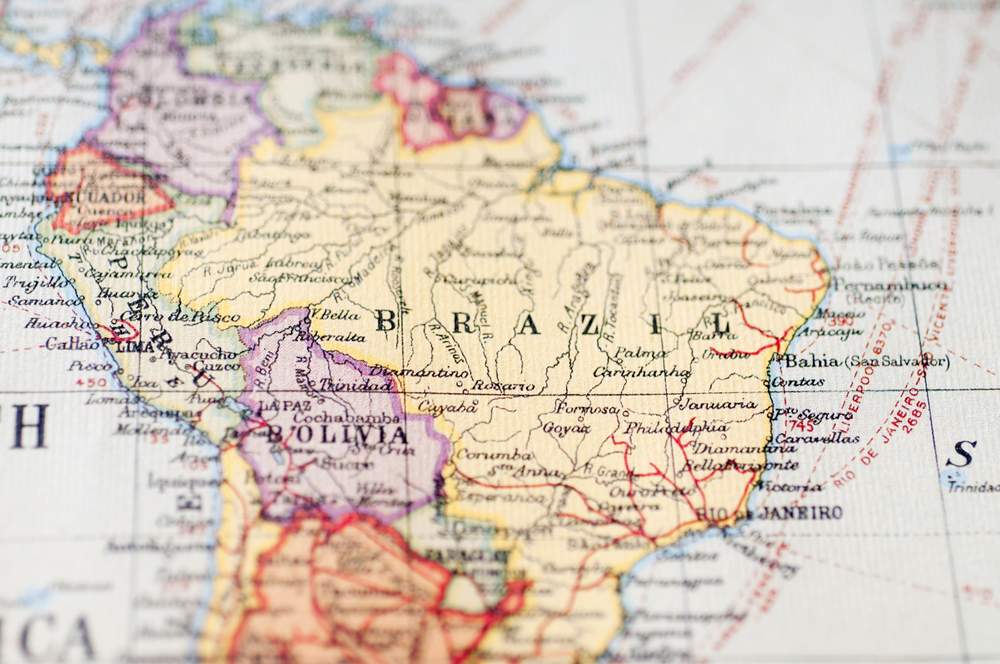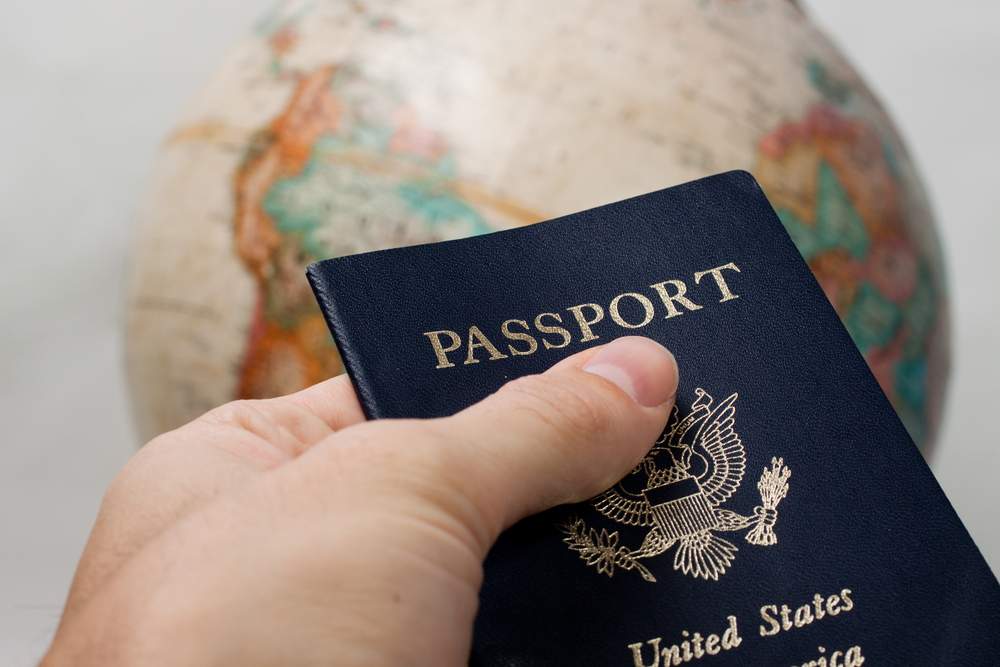Most of us who travel have a pretty solid idea of how long we want to travel for, and how much money we’ve got to do it. Incidentals like an impromptu hot-air-balloon flight, or wreck diving can really add up, but at least they’re fun. But unexpected visa and reciprocity fees can really take the wind out of your sails. Below you’ll find a detailed explanation of which countries in South America have, or soon will have, visa and reciprocity fees for American passport holders, and some tips for (legally) minimizing their impact on your budget.
Don’t let this be you
With guidebooks having a year-or-two lead-time between research and publishing, and a shelf-life of a couple of years, it’s inevitable that things will have changed. I recently met two American scientists in the north of Chile who had planned their trip with laser-like precision. They were all over the world, with caches, and stashes, and friends meeting them at airports even for short layovers.
“The best policy is to do a little research on the visa/reciprocity issues… before you go”
What they didn’t have was an up-to-date guidebook, which led to a hasty goodbye to their bus-mates traveling overland from Argentina to Bolivia, where they, sadly would be refused entry unless they bought a border-priced visa. At US$135 per person, an on-the-spot visa was wince-worthy, and did not fit into their short-term budget. And so they collected their luggage, got off the bus, and walked across the double yellow line to the other side of road to flag down a bus going back to where they’d come from, a bit poorer and not only a little dejected.
The best policy is to do a little research on the visa/reciprocity issues (as well as border skirmishes and anything else the US State Department has to offer) before you go. Here’s a roundup of the current state of affairs for US passport holders.
Visa countries: Bolivia, Brazil, Paraguay, Suriname

A visa is a sticker, or stamp, in a passport that grants the passport bearer the right to enter the country that issues it, either as a one-time entry, or for multiple entries, with the length of time granted varying from country to country and person to person. Be sure to read your visa carefully. Although Bolivia and Brazil both give you five years as a default, the maximum stay for any one visit is 90 days. Visa prices vary widely by country, and may be different depending on your citizenship.
Bolivia
Bolivia instituted its
visa-for-Americans program on Dec 1, 2007, which made it the third heavily-visited South American country to charge what is essentially an entry tax to eagle-bearing passport holders like you and me.
The visa application comes with a set of requirements including passport-sized photos, round trip tickets or an explanation of the route you’ll take and a yellow fever certificate. The cost is US$135 whether you get it at an embassy in advance, or at the border, where travelers report that officials sometimes administer yellow-fever vaccinations on the spot and do away with the other requirements, other than the cash.
Brazil
Brazil also requires US-passport holders to apply for a
tourist visa, at a cost of $160, which Brazil’s consular website points out, is the identical sum that Brazilians are charged to apply for a visa to the United States.
You’ll pay the fee, and fill out paperwork including the photos, passport photocopies and a paragraph explaining what you plan to do in Brazil. Be circumspect here. You want to get to know the culture and see the sights, not party like a rockstar in Ipanema. The Brazilian visa cannot be purchased at the border, or at the airport, and your airline may check that you have the visa before are permitted to get on the plane.
Paraguay
Paraguay, the little-visited landlocked nation nuzzling Argentina’s shoulder, also requires American passport holders to
obtain a visa. The fee is US$160 for a multiple-entry visa, applied for in advance. Visa on arrival is now issued at “Silvio Pettirossi” International Airport in Asunción, Paraguay; the VOA is valid for 90 days and costs the same as the multiple entry applied for in advance. Rumors abound of people walking across the bridge from Brazil into Ciudad del Este without a second glance towards immigration, and no visa in their passport. True? Certainly. Wise? Certainly not.
Suriname
Suriname is the only country in the northern part of South America to require
Americans to have a visa. Travel to Suriname by Americans is sparse, but those that decide to make the Dutch-speaking plunge will pay US$100 as a visa fee. Visas are multiple entry and good for five years.
Reciprocity fees and countries

A reciprocity fee is money which one country charges the citizens of another to enter their country because the reverse is also done. The amounts charged are often equal to the amount charged to citizens of those countries when they apply for visas to enter the United States.
Chile
While the stringbean slim nation of Chile does not require Americans to have a visa to enter, there used to be a one-time-per passport fee of US$131 dollars for US-passport holders to enter the republic. Several other nationalities also paid a reciprocity fee (Australia, Canada, Mexico and Albania) though the amount varies by country. Take comfort in the knowledge that while most Chileans (and most people in the world, it seems) will be rejected for a tourist visa to the United States, the almighty dollar is at work here and will sail you through the reciprocity booth at Arturo Merino Benítez airport a bit poorer, but pretty much assured of entry.
**Editor’s Note: As of 2014, Chile has removed its reciprocity fee for Americans.
Argentina
Argentina has for some time been the southern-cone traveler’s antidote to expensive entry fees and visas. It had announced plans to implement a reciprocity fee, and then later put these on hold indefinitely. Perhaps it’s due to the failing economy and realizing that another $131 dollars (the original proposed fee) could keep people from flying to Buenos Aires. While at the moment, Argentina will let you hold onto your hard-earned cash, keep an eye on this one for the future.
**Editor’s Note: Argentina DOES require a reciprocity fee of $160 for American citizens
Some legal loopholes
So what’s a traveler to the southern cone and environs to do? Ideally you add another several hundredish dollars to your travel budget, and call it a day. Realistically, however, as you raise your eyebrows and think of perhaps a trip to Cambodia, instead, consider these tips that can make your trip to the southern cone a little less painful. Sneaking across borders, which runs afoul of multiple international laws, is not recommended. But with a little creative planning, you can exert some damage control before you even get started.
Minimize Countries
This is the least exciting option, limiting yourself to countries that are free for you to enter, or visiting only one or two pricey ones on your trip. For a week or two-week trip, this is tenable. But if you’ve given up your apartment and kissed your pooch goodbye, do you really want to get only a single stamp in your passport?
Visa and Reciprocity: The same, yet different

First and foremost, remember that while the visa regulations apply regardless of where or how you enter the country, the reciprocity fees at the moment seem to only be collected at international airports. This presents a tidy legal loophole. As of today, in Chile only the Santiago airport is set up to charge the reciprocity fee. In the eventual implementation of Argentina’s fee, it might follow suit and charge entry only at Buenos Aires’ Ezeiza airport.
Travel overland
What does this mean to you? In the case of Chile you’ll want to focus on overland (or oversea) travel into the country, which means entering Chile from Peru (no visa) or Bolivia (visa required), or Argentina, which hopefully will not be enacting its reciprocity fee any time soon.
Consider Uruguay
This wee nation, (along with for the moment, Argentina) South America requires nothing more than a passport with six months more of validity and an onward ticket. Smiling couldn’t hurt, you’ve entered a country for free! There’s quirky, stately architecture, fresh pasta and beaches to be explored, and in just a few hours from Montevideo you can be in Colonia, a cobblestoned gem of a town, which is actually on the way to Buenos Aires.
Start in Peru
Peru currently has neither visa nor reciprocity fees. So why not start here? You can fly into Lima, toodle along through the sights and flavors, including of course Machu Picchu and the Colca Canyon before making yet another backbreaking bus journey to Tacna, from which you can taxi across the border to Arica, Chile. Peru is worth a visit, even if it wasn’t on your original itinerary (though it should have been), and if you’ve got a really good arm, it’s just a stone’s throw from Chile and Argentina.
In summation
The key here is flying into a country that either has no visa/reciprocity fee or into one for which you were planning to pay a visa fee anyway. Yes, I am warning you against flying into Argentina, a country which is incredible to visit in every way. But with reciprocity fees that swallow a chunk of your budget, you’ll have to think twice about making it your South American starting point.
So in summation for the single-nationality US passport holders, visas are required for Bolivia, Brazil, Paraguay and Suriname. Reciprocity no longer charged in Chile, but IS now in effect in Argentina. And what about Colombia, Venezuela, Ecuador, Peru, Guyana, French Guyana and Uruguay? Well they all have a giant welcome sign with your name on it. (See map)
So plan your trip accordingly, and don’t get caught unaware on a bus zooming towards a border crossing where you’ll be fleeced with no prior warning. We like to leave that to the pickpockets on the street.
Or you could always go to Asia instead.
Start planning your trip to South America:
Photo credits: Mark Skalny, KPG_Payless, doglikehorse, AndreaTS


